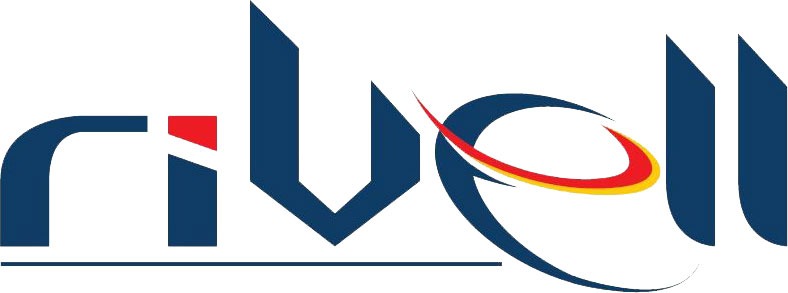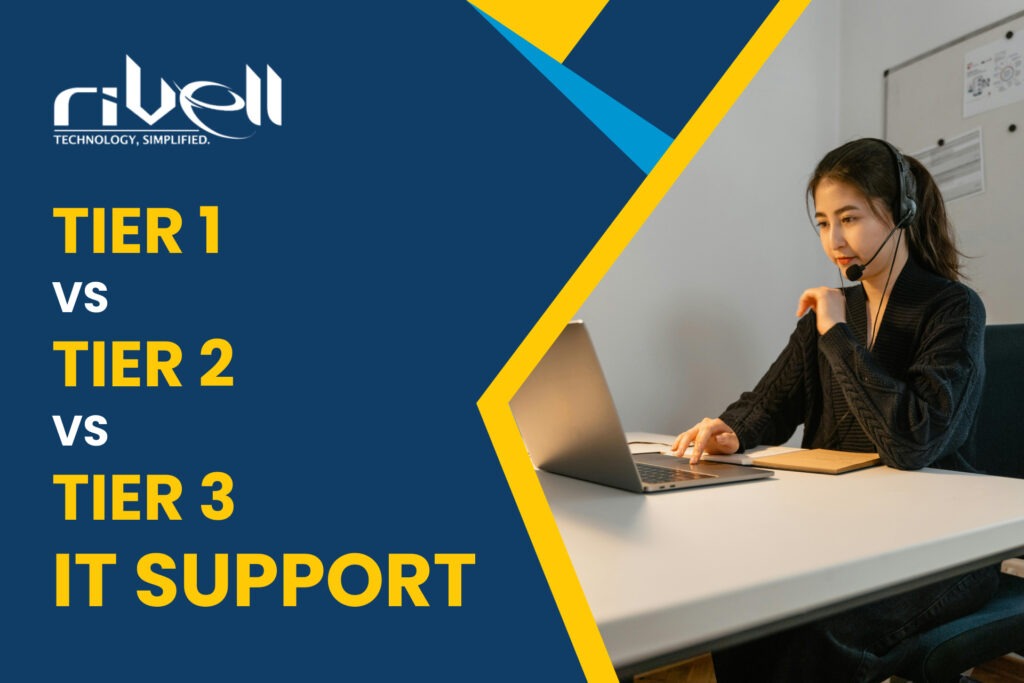Introduction
In today’s technology-driven world, businesses rely heavily on IT support to address their technical issues and ensure smooth operations. However, not all IT support is the same. There are different Tiers of IT support, each with its unique responsibilities and skill sets. In this complete guide, we will look into the world of IT support tiers, compare Tier 1, Tier 2, and Tier 3 support, and explore the benefits and considerations of each level.
By the end of this article, you’ll have a clear understanding of the various IT support tiers and be able to determine which tier best suits your business’s needs.
According to Statista, The global IT support services market is expected to reach 311 billion U.S. dollars by 2023, up from an estimated 216 billion U.S. dollars in 2019. As businesses become increasingly reliant on technology, the demand for IT support services continues to rise.
Tier 1 IT Support: The Foundation of IT Assistance
At the first Tier, we have the foundation of IT support. Tier 1 support serves as the initial point of contact for users who encounter technical issues. This level of support handles basic tasks such as password resets, software installations, and troubleshooting common user problems. The goal of Tier 1 support is to provide quick and efficient solutions without the need for escalation.
Tier 1 support professionals handle around 70% of all IT support requests typically equipped with a fundamental understanding of common technologies and software used within the organization. They possess strong communication skills to effectively interact with end-users who may not be technically inclined. In addition to resolving issues promptly, they also play a crucial role in documenting and categorizing problems for future reference.
Tier 2 IT Support: Advanced Troubleshooting and Technical Expertise
Moving up the hierarchy, tier 2 IT support takes on more complex issues that require advanced troubleshooting and technical expertise. This level of support involves in-depth knowledge of networks, servers, and systems. Tier 2 support personnel handle around 20% of all IT support requests and often work closely with tier 1 support to provide specialized assistance to users. Tier 2 support professionals work closely with tier 1 support to address escalated issues and provide more specialized assistance to users.
Tier 2 support requires a higher level of technical knowledge and analytical skills. Professionals at this tier are proficient in diagnosing and resolving complex problems that often go beyond the scope of tier 1 support. They have a solid understanding of network configurations, hardware components, and software applications. Tier 2 support professionals collaborate extensively with other IT teams to tackle intricate issues efficiently.
Tier 3 IT Support: Highly Skilled Specialists and Custom Solutions
According to a report, 94% of organizations are using cloud technology in some form. This highlights the increasing reliance on advanced technologies and the need for specialized support to manage complex IT infrastructures.
Tier 3 support professionals play a critical role in addressing intricate problems and providing customized solutions. They possess deep expertise in specific IT domains, such as networking, cybersecurity, and cloud infrastructure. As organizations continue to invest in advanced technologies, the demand for skilled specialists in tier 3 support is expected to grow.
The Bureau of Labor Statistics (BLS) reports that the employment of computer and information technology occupations is projected to grow 11% from 2019 to 2029, much faster than the average for all occupations. This growth indicates a rising need for IT professionals with specialized skills, including those in tier 3 support roles.
Read More : What is the difference between IT support and managed services?
Tier 1 vs Tier 2 vs Tier 3 IT support Tiers
Tier 1 support personnel resolve around 80% of incidents at the first point of contact. This emphasizes their ability to handle routine problems efficiently and provide quick solutions.
On the other hand, Tier 2 support personnel handle around 18% of incidents that require more in-depth technical knowledge and expertise, according to the same study. They play a crucial role in addressing complex issues and providing advanced troubleshooting.
Lastly, Tier 3 support deals with the remaining 2% of incidents that are highly critical and complex. This tier comprises specialized experts who possess deep knowledge and hands-on experience in specific IT domains to resolve intricate problems effectively.
Now that we understand the basics of each tier, let’s compare Tier 1, Tier 2, and Tier 3 support based on various factors:
1. Technical Expertise
Tier 1 support requires a basic level of technical knowledge, while Tier 2 support demands more in-depth understanding. Tier 3 support, on the other hand, necessitates specialized expertise in specific IT domains.
2. Issue Complexity
Tier 1 support handles routine and straightforward problems, while Tier 2 support deals with more complex issues. Tier 3 support tackles the most critical, intricate, and custom problems that often require extensive investigation and analysis.
3. Escalation Process
Tier 1 support acts as the initial point of contact and escalates issues to Tier 2 or Tier 3 when necessary. Tier 2 support escalates complex cases to tier 3 for resolution, ensuring efficient problem-solving across the support tiers.
4. Collaboration
Tier 1 support collaborates primarily with end-users, while Tier 2 and Tier 3 support work closely with other IT teams, including network administrators, system administrators, and database administrators, to resolve complex issues.
Aspect |
Tier 1 |
Tier 2 |
Tier 3 |
|---|---|---|---|
| Scope of Issues | Basic and common technical issues such as password resets, software installations, and basic troubleshooting of hardware. | More complex technical issues that cannot be resolved at Tier 1, involving in-depth troubleshooting, diagnosing software and hardware malfunctions, and resolving escalated user problems. | Highly specialized technical issues requiring deep expertise, advanced troubleshooting, and possibly collaboration with vendors or development teams for resolution. |
| Skill Level | Entry-level support staff with basic technical knowledge and training, capable of handling routine issues and escalating more complex ones. | Technicians with advanced technical skills and experience, possessing a deeper understanding of systems and capable of resolving intricate problems independently. | Experts with specialized knowledge in specific technologies or systems, having extensive experience, certifications, and advanced skills to tackle the most challenging technical issues effectively. |
| Responsiveness | Immediate assistance for routine issues, available 24/7 through various channels such as phone, email, or chat. | Timely responses to escalated issues, usually within a few hours, requiring additional time for troubleshooting complex problems. | Response time varies depending on the complexity of the issue and availability of specialized technicians, resolutions may take longer due to the intricate nature of the problems. |
| Escalation Path | Escalates unresolved issues to Tier 2 support when they exceed their capabilities or require further investigation. | Handles escalated issues from Tier 1 and attempts to resolve them independently; escalates unresolved issues to Tier 3 for specialized assistance if necessary. | Acts as the final escalation point for the most challenging technical issues, may collaborate with vendors or other departments to find solutions. |
| Training/Certifications | Basic training on common IT systems and procedures, entry-level certifications such as CompTIA A+, focusing on foundational skills. | Comprehensive training on advanced troubleshooting techniques, relevant certifications such as Microsoft Certified Solutions Associate (MCSA) or Cisco Certified Network Associate (CCNA), focusing on specialized areas of expertise. | Extensive training on specific technologies or systems, advanced certifications such as Microsoft Certified Solutions Expert (MCSE) or Cisco Certified Internetwork Expert (CCIE), focusing on mastery of complex technical concepts. |
| Cost | Generally the most cost-effective option as it employs entry-level staff and handles routine tasks efficiently. | Moderately priced, reflecting the higher skill level and experience of technicians, offering good value for resolving complex technical issues. | The most expensive option due to the specialized expertise and advanced certifications required, justified by the ability to provide effective solutions for the most challenging IT problems. |
Benefits and Considerations of each IT Support Tier
Tier 1 support offers quick and straightforward solutions, allowing users to resume their work promptly. It is also cost-effective due to the reduced skill requirements. However, it may not be suitable for complex and specialized situations.
Tier 2 support brings a higher level of expertise, leading to faster resolution of complex issues. This level of support ensures that a wide range of problems can be handled effectively. However, it may require more resources and training compared to tier 1 support.
Tier 3 support provides specialized knowledge and custom solutions, ensuring optimal performance of complex systems. These experts can address unique challenges and implement advanced technologies. However, it is the most expensive tier due to the highly skilled resources involved.
The Importance and Differentiation of Tech Support Tiers
In the technical support hierarchy, different IT support models are categorized into tier 1, tier 2, and tier 3, representing the various IT tier support levels. Each level plays a crucial role in the overall functioning of the system, ensuring seamless operations and effective problem-solving. The Tech Support Tiers, from tier 1 to tier 3, illustrate a progression of technical expertise and issue complexity, with tier 1 providing initial user assistance, tier 2 offering advanced troubleshooting, and tier 3 comprising highly skilled specialists who provide custom solutions to intricate problems. Understanding the distinctions between these tiers is essential for businesses, including Rivell, to establish a well-structured and efficient IT support system.
Understanding Tiered IT Support Models
When it comes to IT support models, there is a clear distinction between Tier 1, Tier 2, and Tier 3. These tiers represent different levels of expertise and responsibility within the support framework. Tier 1 is the initial point of contact, handling basic user inquiries and providing general assistance. Tier 2 steps in when more complex issues arise, requiring specialized knowledge and advanced troubleshooting skills. Finally, Tier 3 consists of highly skilled professionals who tackle the most challenging and intricate problems, often involving specialized domains or advanced technical solutions. The Tier 1 vs Tier 2 vs Tier 3 dynamic ensures efficient and effective support, allowing each level to focus on their respective areas of expertise and deliver the best solutions to users needs. Unlock excellent IT support with Rivell.
Conclusion
In conclusion, understanding the tiers of IT support is crucial for businesses looking to create a strong support system tailored to their unique needs. At Rivell, we are here to help you navigate through the tiers of support – Tier 1, Tier 2, and Tier 3 – ensuring that your organization can address user issues effectively, from basic troubleshooting to advanced problem-solving.
By considering important factors like technical expertise, issue complexity, and collaboration, you can determine the most suitable IT support tier for your specific requirements. Remember, a well-structured IT support system is not just an option; it is essential for maintaining productivity and effortlessly resolving technical challenges.
Are you ready to optimize your IT support strategy? Get in touch with Rivell today and empower your business with the right support at every tier. Your journey towards success begins with the right IT solutions!
Frequently Asked Questions on Tier 1 vs Tier 2 vs Tier 3 IT Support Tiers
1. What is Tier 1 Tier 2 and Tier 3 technical support?
Tier 1 technical support typically involves basic troubleshooting and issue resolution for common IT problems. It’s often the first point of contact for users seeking assistance. Tier 2 support handles more complex issues that cannot be resolved at Tier 1 and may require specialized knowledge or expertise. Tier 3 support deals with highly complex technical issues that cannot be resolved by Tier 1 or Tier 2 and often involves in-depth investigation and advanced troubleshooting.
2. How does Tier 1 IT support differ from Tier 2 and Tier 3?
Tier 1 IT support primarily focuses on handling basic user inquiries and resolving common technical issues such as password resets, software installations, and network connectivity problems. Tier 2 support involves more specialized troubleshooting and requires a deeper understanding of IT systems and applications to resolve complex issues that Tier 1 cannot handle. Tier 3 support deals with the most intricate technical challenges that require advanced expertise and often involves working directly with vendors or conducting extensive system diagnostics.
3. How do companies benefit from each level of IT support tier?
Companies benefit from Tier 1 support by having a frontline team that can quickly address common IT issues, minimizing downtime and keeping productivity high. Tier 2 support provides businesses with more specialized expertise to resolve complex technical problems efficiently, reducing the need for costly downtime and improving overall system reliability. Tier 3 support offers companies access to highly skilled technicians who can tackle the most challenging technical issues, ensuring critical systems remain operational and minimizing the impact on business operations.
4. What is an example of a Tier 3 support?
An example of Tier 3 support might involve investigating and resolving a critical server outage that is impacting multiple business-critical applications. This could require in-depth analysis of system logs, performance metrics, and network configurations to identify the root cause of the issue. Tier 3 technicians may also work closely with hardware or software vendors to implement fixes or patches to resolve the problem and restore service as quickly as possible.
5. Can Rivell customize its Tier 2 and Tier 3 support services to meet specific business needs?
Yes, Rivell understands that every business has unique requirements, and therefore offers customizable Tier 2 and Tier 3 support services. Whether it’s tailoring support hours, allocating dedicated resources, or providing specialized expertise in certain areas, Rivell works closely with clients to design support solutions that align with their specific needs and objectives. Contact us today.









